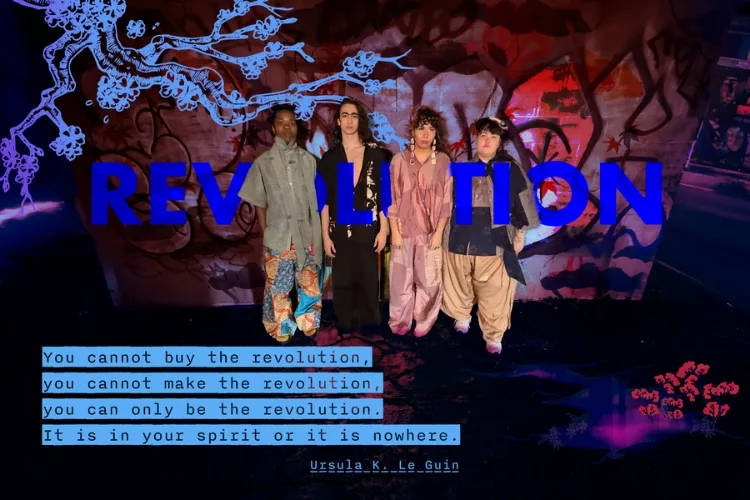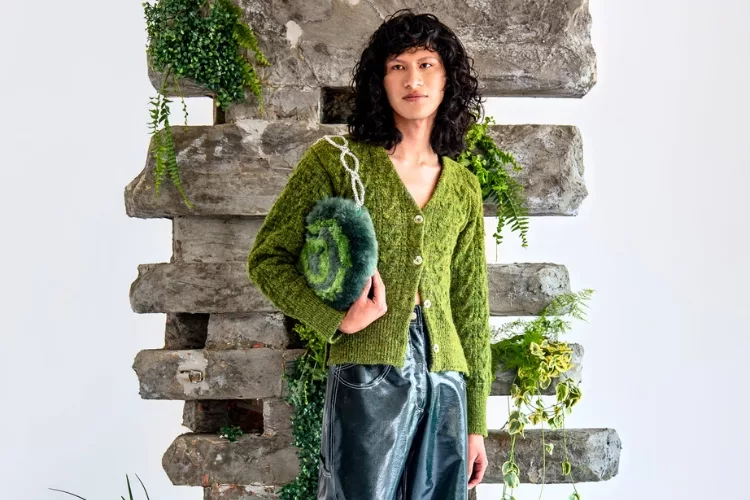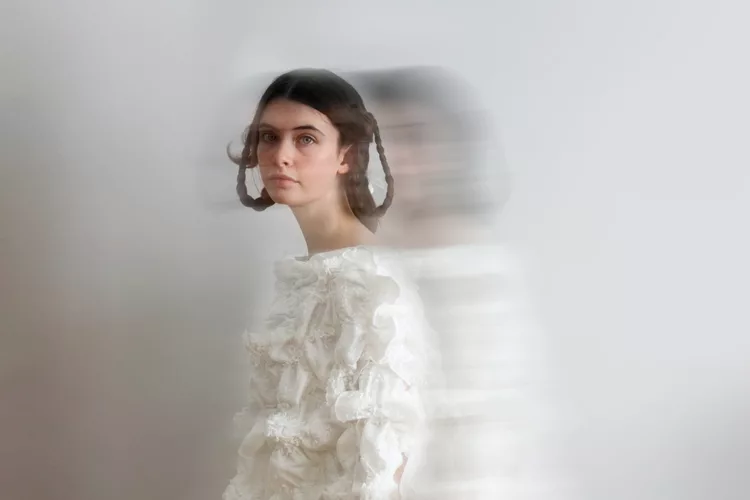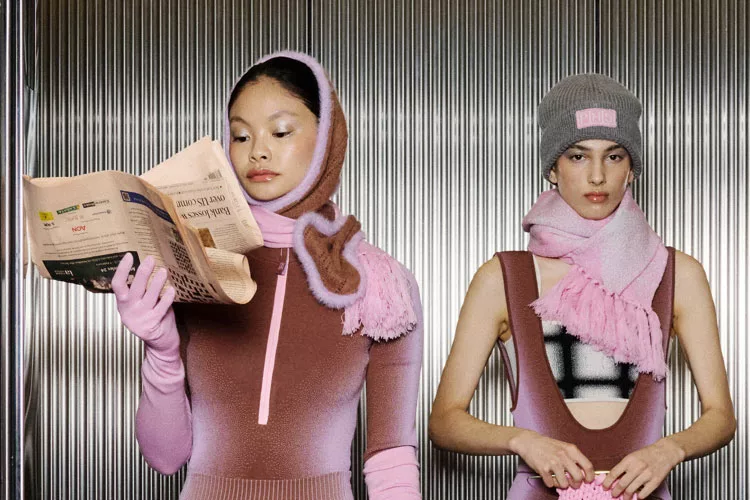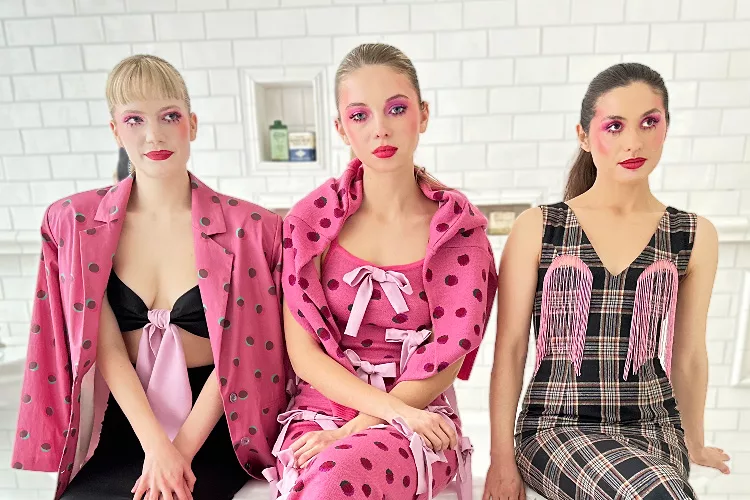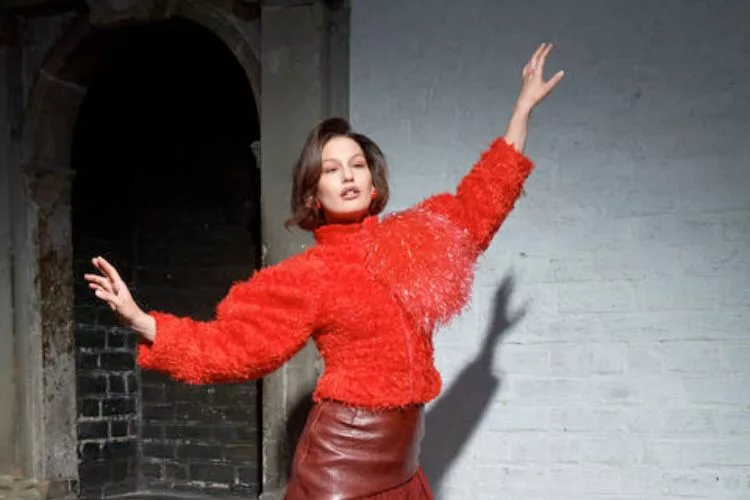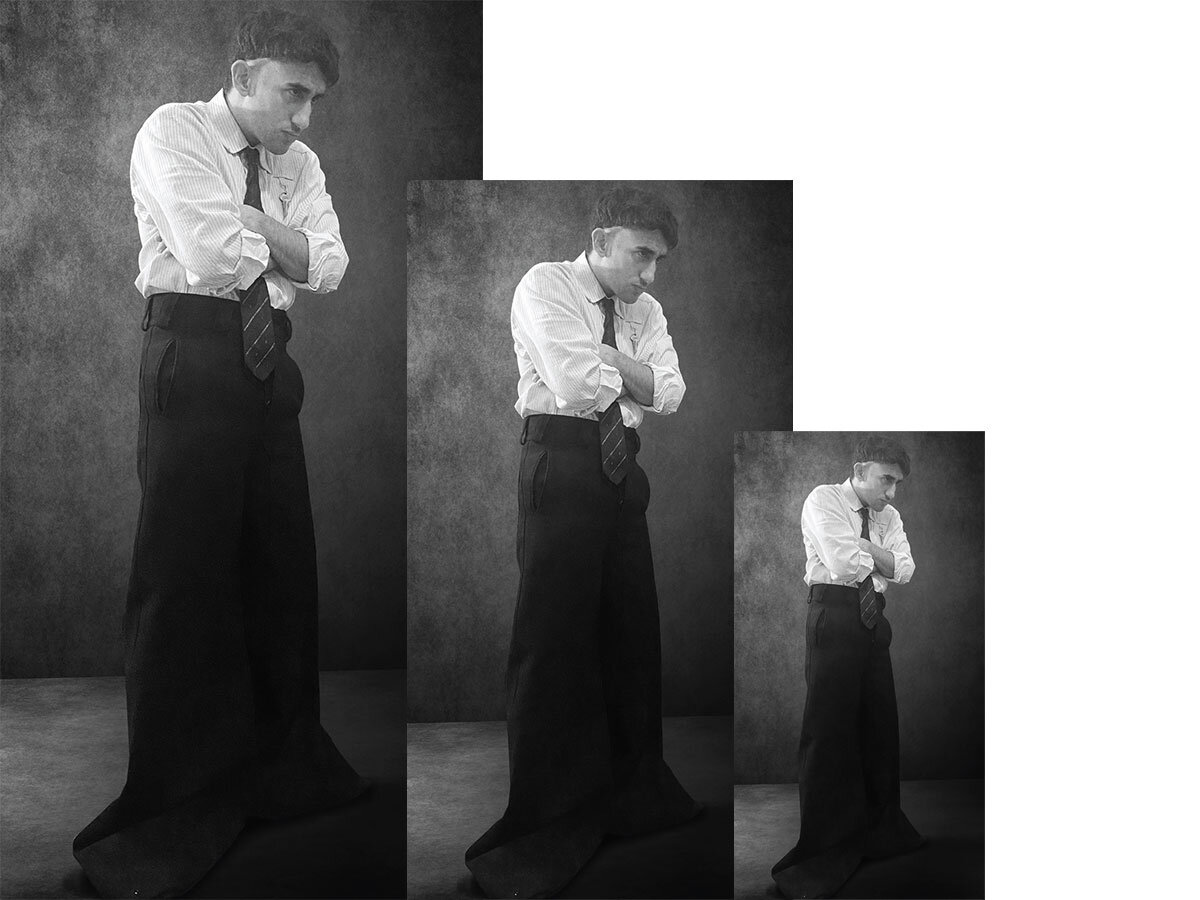
Editor’s Note: We’re republishing this interview we did awhile back with fashion designer Yamil Arbaje. He is still working on his own collections and will be showing this NYFW as part of the Parsons Show.
Yamil Arbaje connected with us right when we were publishing our Fashion Grads piece. We loved his work but it was too late for that article.
After more delays on our end we finally managed an interview and we think you’ll find it was well worth the wait. Yamil is a thoughtful designer who straddles the line between the Eurocentric fashion world and his roots in the Dominican Republic. His unique p.o.v. has translated into visually engaging and beautifully crafted pieces that acknowledge the history and culture of the global south while also maintaining his own vision. He is someone well worth following.
NKM –So you just graduated from Parsons – how was the semester?
Yamil –It was cool and interesting but after the Covid-19, it was slow. Yet, something compelling came out of it – instead of a regular photoshoot, with a standard model, I needed to think a lot about how to achieve something without locations – so I did my photoshoot at home trying to problem solve amidst adversity.
Before you went to Parsons you had a design company in the Dominican Republic with a partner? Is that right?
In 2014, I started a design project that involved fashion and from that I started making clothes. I went to university in the Dominican Republic and then I got a full scholarship to come here.
Amazing. Are you planning to stay in NYC?
Yes, for now I will apply for a work visa but if I can go to Europe, I’d love to go there and work with other designers. And also maybe do a Master’s in fashion.
The collection critiques what people tend to use from Latin America. If people tend to exoticize, the palms, dance, the cultural symbols, I wanted to do the opposite and use things that are never used in fashion or art.
I started looking at the second hand clothing market in the Dominican Republic, the political archives, the graphics from the ‘60s along with dress code, social behavior and cultural values –really looking at our history to make a collection that represents our identity
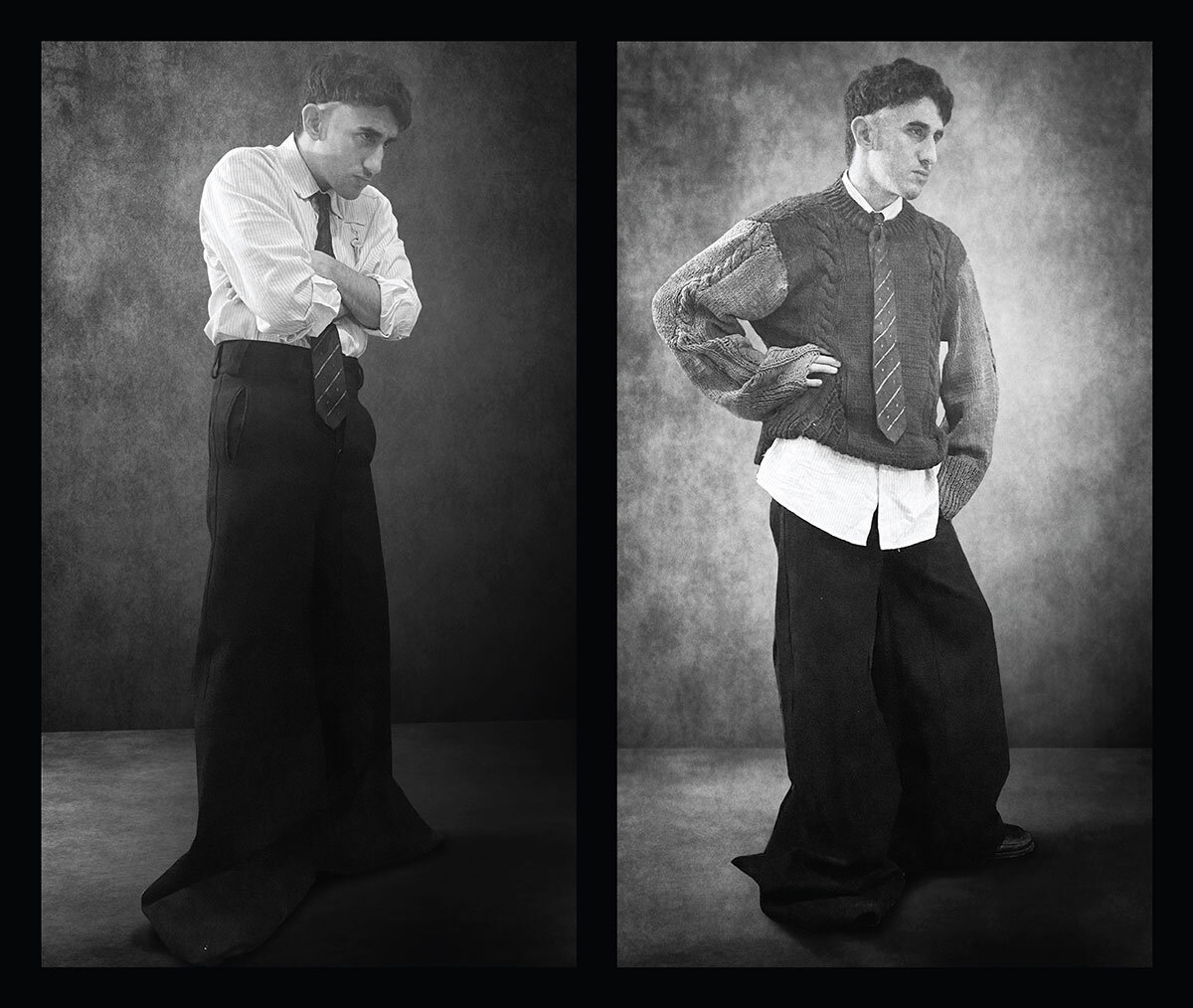
Were there particular things in the archive that stood out to you?
I was looking at suits – Latin masculinity, pockets, colors and shirting and the wide leg trousers and how they achieved these looks through local tailors. Also I wanted to represent the chaos of the ‘60s politicians and how this chaos is translated into the working class. For example, I designed an oversized shoulder pad that mimics the hunched over posture of the working class, the weight they carry.
By tweaking wide legged trousers and making them more wide, then wider, exploring the physicality of the working class and that translated into interesting silhouettes.
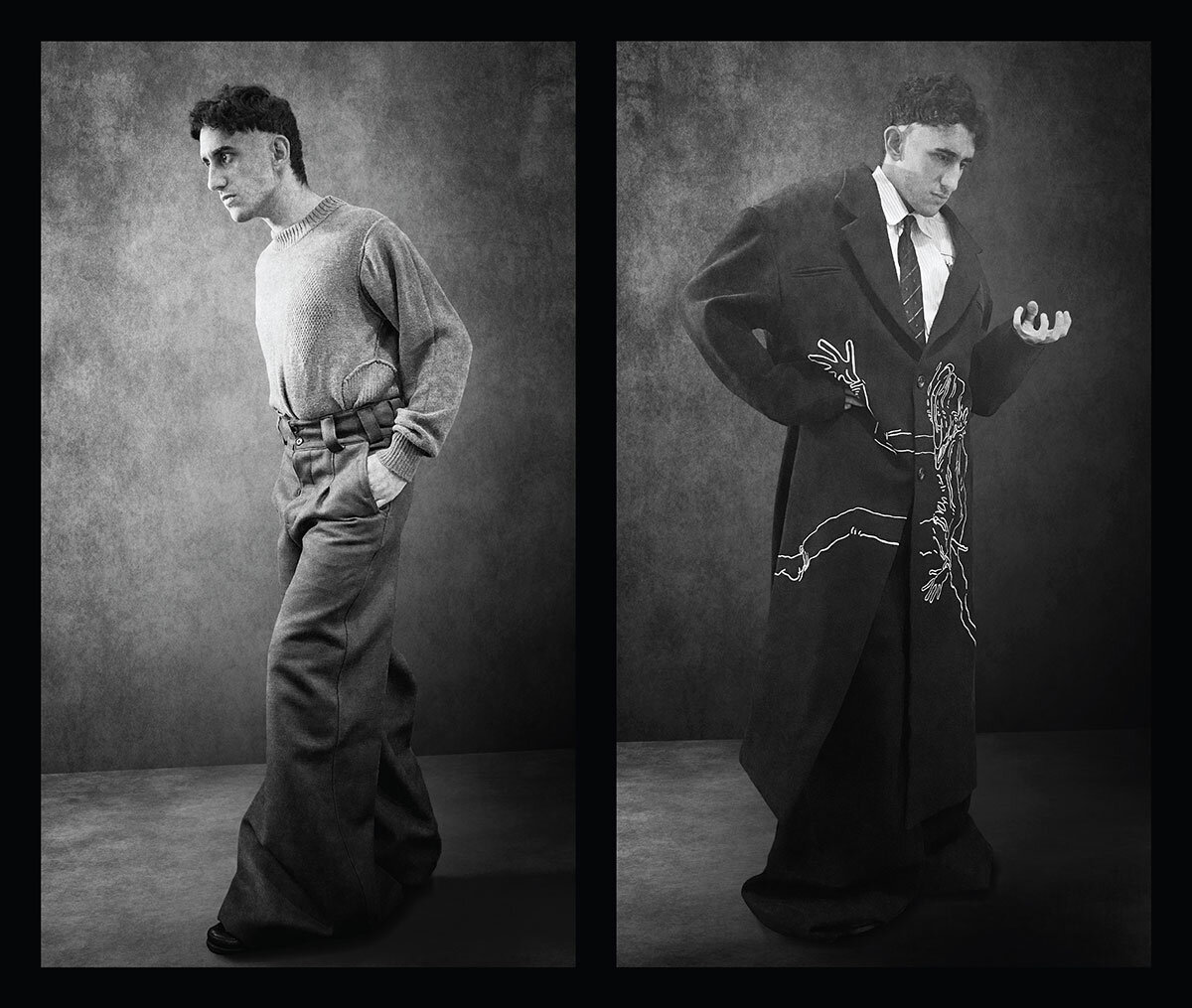
I loved that exaggeration of the silhouette. I think it’s really jarring. It just feels fresh and I like the reasoning behind it. I’m not familiar with Shifting the Geography of Reason by Lewis Gordon, I was looking at the video when you called in. Can you just talk about it, why it influenced you?
Yes. He talks about how we perceive knowledge and that knowledge from the Caribbean is not as validated as when it comes from Spain or France or London, from Europe. He says the only knowledge that is validated from the Caribbean are folkloric values. For example, if you go to Latin American fashion shows, a lot of the designers are just looking into flowers and palms and I think that’s not the Caribbean or Latin America really. We have a lot of history and that’s what I wanted to represent through my collection. To see if we could translate this lived history into a more global language.
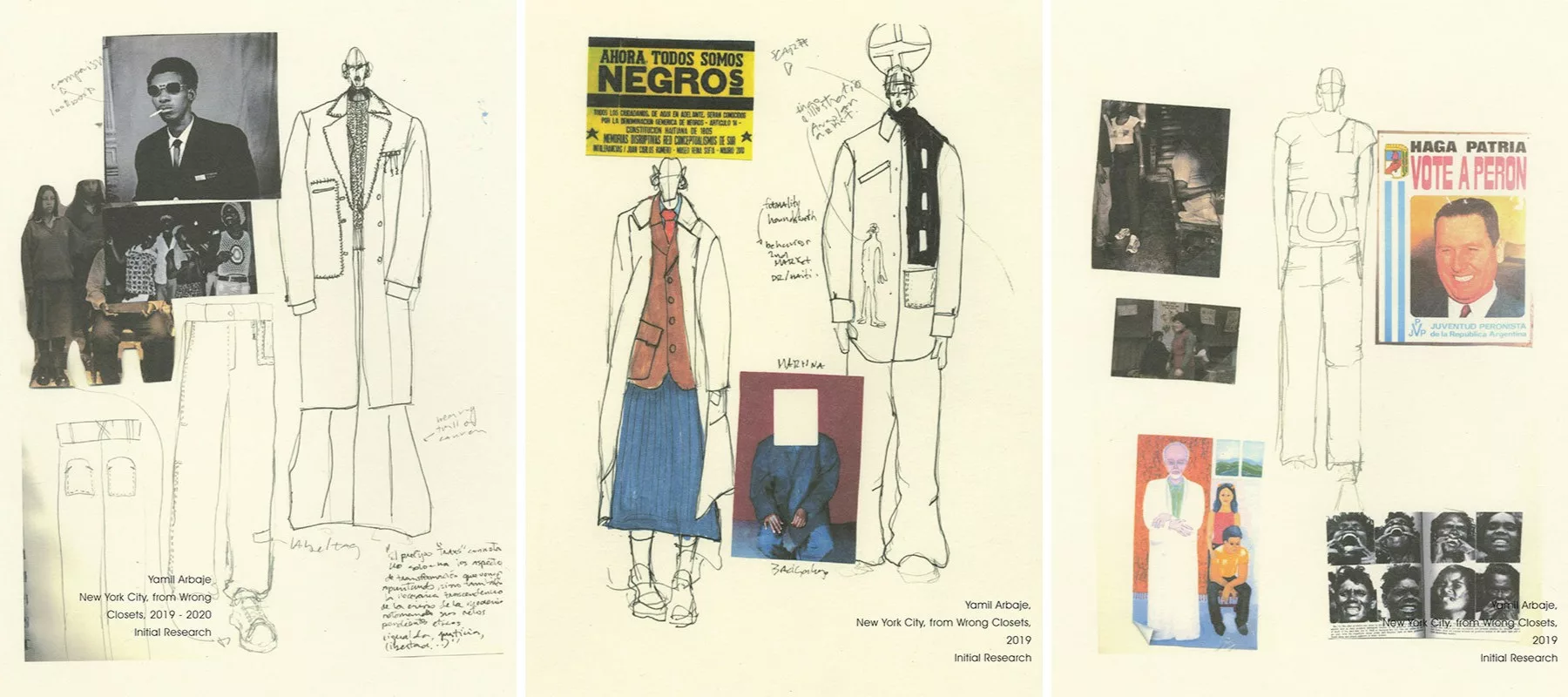
Being the authority on a larger part of your culture and not just the traditional stereotypes?
Exactly. And yes, that’s it. Basically also I collaborated with people from Angola, in Africa, also with a local hand-knitter in the Dominican Republic – looking at our culture and the value it has not just looking at how people look at it and they try to exoticize it but really understanding what we have, and we are able to create knowledge and not just dance and entertain, and be exotic for tourists.
And also it was a process for me to learn about Latin American art. I went deep. It was amazing to see artists from Argentina that are very relevant and they worked in the ‘60s.
Who are some of your favorite artists?
So many! León Ferrari, Luis Camnitzer, Roberto Jacoby and many others…
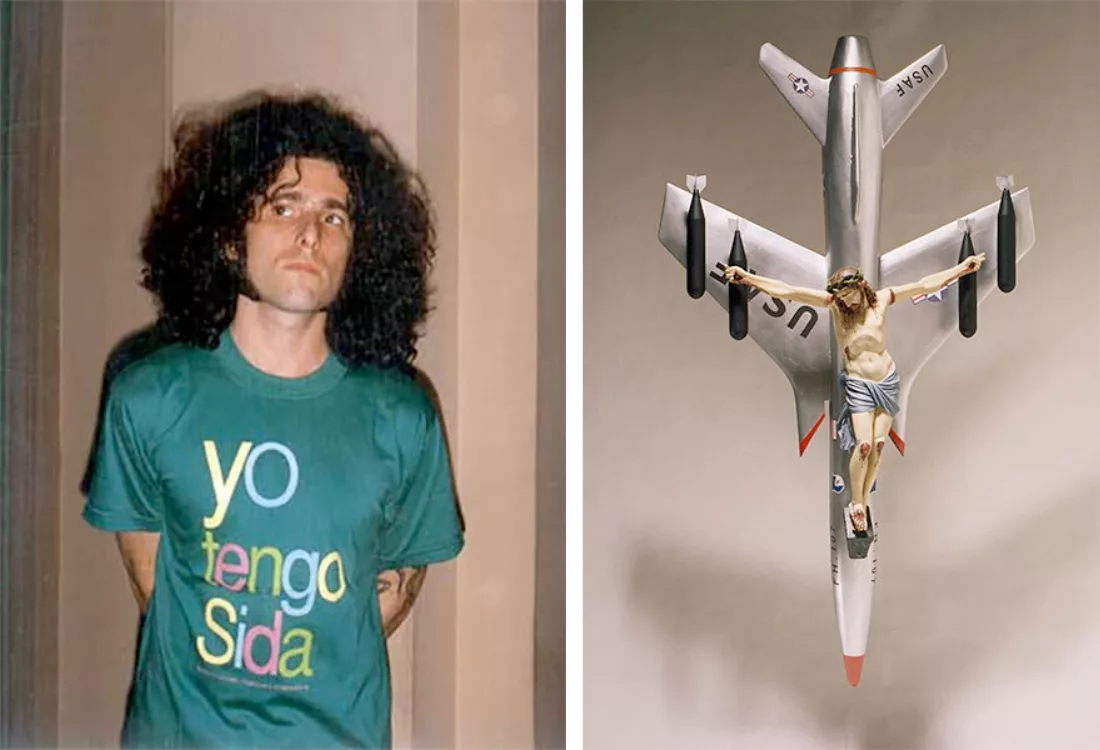
How do you find the current situation – the pandemic, social unrest, uprisings – changing expectations of how you’re going to go forward? It actually feels like it’s a good time in terms of recognizing voices that are sometimes silenced.
I think that social movements need to keep going and I don’t think they should stop but I think we need to attack problems from the roots and understand how we are being educated from high school, elementary schools, and really change the curriculum.
At university the designers we learn about are from Europe but not from Africa – we don’t know any designers from Africa from the 1940s or ‘50s… we just know about Coco Chanel or Elsa Schiaparelli or Madam Grey so I think we need to change the curriculum.
I don’t think these social movements are enough to attack the problems, to change the paradigms of the fashion industry. A lot of people are talking they want to change and it’s not only Africa and African Americans it’s the entire global south – the Caribbean, Jamaica, Dominican Republic, South America, the whole African continent.
You’ve talked about 2nd hand clothes but, beyond that, how is sustainability part of your collections?
I think sustainability should be in every collection that I approach but also I think it’s a process and sometimes it’s expensive and I cannot think I can approach a whole collection with sustainability but I can think how I pay the workers. That’s why I collaborate with a lot of people in the design process. There are many ways to approach the sustainability part in fashion. One is materials, the other is how do you deal with the workers and the factories and how do you co-design with communities or people and a lot of my pieces were co-designed, for example, with a local designer.
I gave him opportunity to talk about the design, to teach me about knitting and we had a good relationship working particular pieces. And how do you pay them? What amount do you pay them? But I didn’t approach in this collection any recycled materials – I just used clothes from the 2nd hand market and transformed them.
But that is sustainable to me.
Yes, that is. But I think right now sustainability should be the normal and every designer should be thinking about a way to approach sustainability in a collection whether it is with workers, communities, technologies, materials, it should be part of the conversation.
I’m looking at the white embroidered over-sized shirt, can you talk to me about that illustration on there. Is there a story behind this?
Yes, this is my friend’s illustration from Angola. His name is Diego and I love his illustrations… and the feeling I got from this illustration was very existential and representing that feeling of angst and social anxiety. What he draws is based on a specific person, the owner of the company in Angola, and he’s basically criticizing capitalism and social anxiety and that’s why he is like that and falling apart.
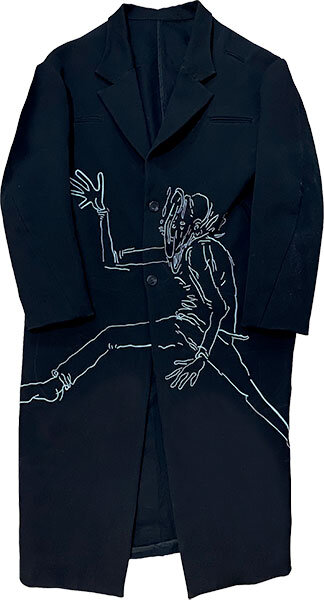
Yeah, it’s a disturbing, evocative drawing. And the large coat with that illustration, someone waving?
It’s from the same series that he draws and what he told me is it’s the same person, but it looks different. We talk about where it should be, how it should be, the scale of the embroidery and that’s it.
I saw on your site that your collection before this is called “Murder is my business” can you talk about that?
So “Murder is my Business” I designed the clothes but not the concept of the collection – the clothes were based from artefacts from the Museo Memorial de la Resistencia. It talks about the dictatorship that ran from the 1930s to1961 and then other governments from 1961 to1990 We designed every piece on every room of the museum – so every piece represents a specific time or event in the DR.
What was the reaction to that collection?
Well at that moment I was in the DR and all the people who looked at the collection were from the DR. The first minutes we posted the photos we had one negative reaction as we knew was going to happen. Then we explained everything and it had a lot of positive reviews and we were invited by the Museum of the Memorial Resistance of the Dominican Republic to design a Second Edition with them. This time we focused more on historical events in the Dominican Republic from 1930 to 1990.
Murder is My Business was inspired by Weegee photographs and Dominican historical archives, but also it was made from a Cinema perspective in which we wanted to expose the reality of my country exactly how it is. It wasn’t thought of as a “fashion campaign” It was made with a film crew, actors –not models.
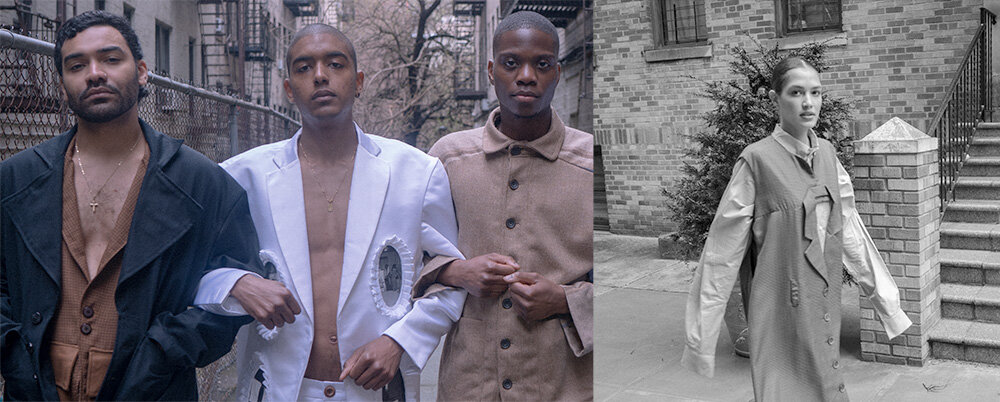
Brilliant. And the Social Essence collection?
Social Essence was my first fashion project at Parsons. That was talking about the diaspora and how I felt in NY when I came here and it was a journal, a biography. I explored the influence of Dominicans here in the City – the white suit is like the building frame and it has pictures of my friends who came here in the early 2000s with their families and they are considered part of the Dominican diaspora. Also, I look again at the secondhand market and if you see a long dress, the reference it’s a traditional dress in the DR like in agricultural space and it has a print which is a houndstooth but is very common in the second hand market. Everything is related and part of my interest in every collection I approach my interests in a very different way but think everything is connected.
Three years from now, if things could work out perfectly for you, what would you like your life to look like?
Honestly, I want to have my office in Europe, a small office, and I want to be working as a designer in a small firm like Raf Simons or Dries von Noten. I want to live in the country side. I want a balance between the city and the countryside, I don’t want to be in the city too much and I see my life in the studio everyday working from there that’s the perfect life. I don’t know if in 3 years I can do that.
Right, maybe 5.
6… laughs…
Thank you for talking with me, Yamil
Thank you!
Check out his website and follow him on instagram
–Katya Moorman
Related Articles

